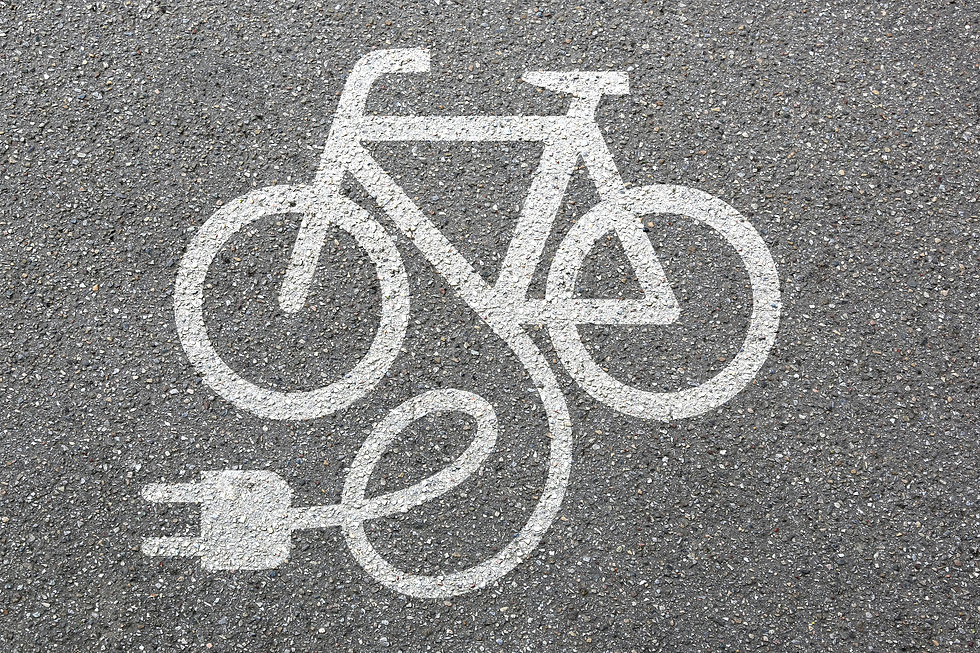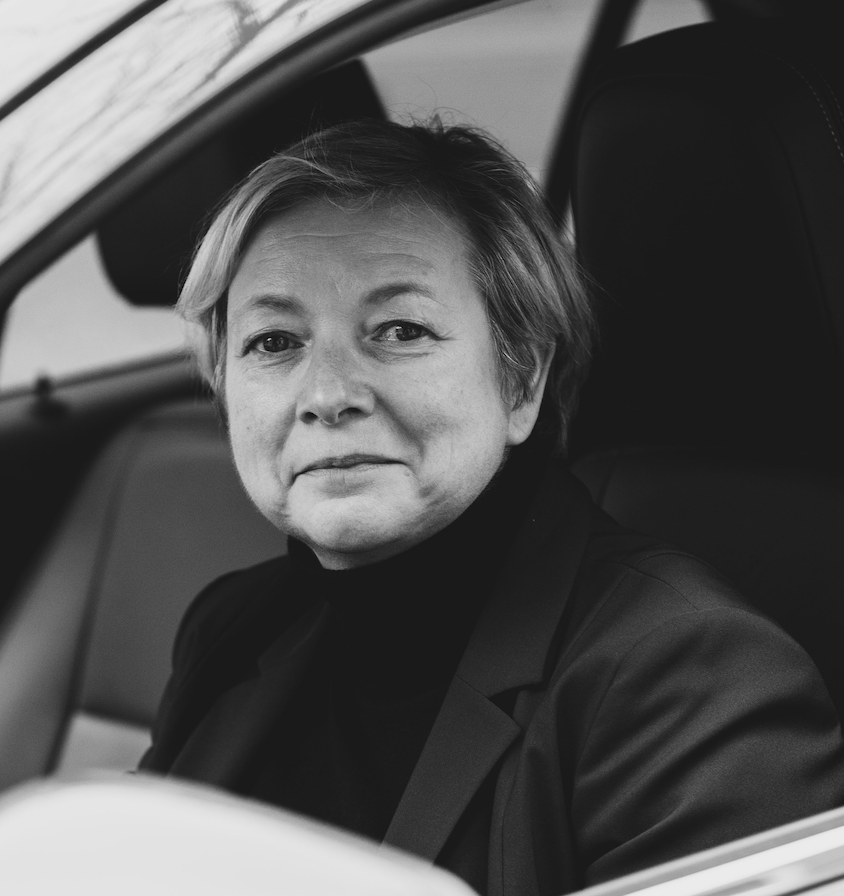From battery to wall box: your gateway to practice your e-mobility vocabulary
- Saskia Harreman

- Dec 23, 2023
- 5 min read
I have always struggled so much with the new e-mobility language. To give you some examples: kilowatt-hours, AC/DC charging, pedelecs, or spedelecs. What are the differences? When should I use them, and what do I need? Do you struggle as well with all these new terms? Read on and check out my E-Mobility glossary, where I explain some essential terms in a friendly and easy-to-understand way. I'll cover everything from battery capacity to wall box, so you can feel confident talking about EVs in 2024!

BATTERY
A rechargeable power unit used for storing electrical energy. Nowadays, most batteries in electric and hybrid vehicles are lithium-ion batteries due to their high energy density and durability.
BATTERY CAPACITY
The maximum energy that a battery can store. It is expressed in kilowatt-hours (kW-h). The battery capacity of today’s electric vehicles is generally between 30kW-h and 110kW-h.
BIDIRECTIONAL CHARGING The ability of an electric vehicle to not only store electrical energy, but also to feed it back into the grid.
CHARGING CURVE The change in the state of charge during the charging process. Fast charging does not take place at a constant rate. Instead, the highest level of charging power is provided to the battery at low charge levels, and gradually decreases as the battery fills up. The charging curve is aimed at maximising the life of the battery technology.
CHARGING POWER The amount of power available to the EV during the charging process. A household socket provides approximately 2.3kW of charging power, while a public charging station or wallbox provides 10-22kW. A fast charging station typically delivers 50-100kW, and ultra-fast charging stations can reach 350kW. The charging power is a key factor in how long it takes an EV to reach full charge.

CONNECTOR TYPES
For now, all electric cars can be charged using household sockets. In addition, the EU has agreed on the Mennekes Type 2 as the standard connector type at public charging stations within Europe. However, other direct current (DC) connector types can sometimes be found at fast charging stations. While the European Combined Charging System (CCS) Type 2 connector (also known as the CCS Combo 2) has become the standard connector type, some manufacturers (predominantly Japanese brands) have continued to use the CHAdeMO standard in some markets. Meanwhile, Tesla models have a modified Type-2 connector for using the brand’s own Super-chargers.
DEEP DISCHARGE Power consumption until the charge is completely exhausted or falls below a certain voltage. This should be avoided because it can cause damage to the battery. Most EVs have an integrated circuit that protects the battery by disconnecting it before deep discharge can occur.
DEGRADATION The loss of battery capacity over time. Various factors contribute to degradation, including the intensity of use, the ambient temperature and the type of charging (AC or DC), as well as the general ageing process.
DIRECT CURRENT (DC) CHARGING Also known as ‘fast charging’, this type of charging utilises commercial-grade three-phase connections and delivers power directly to the vehicle’s battery rather than through the on-board charger. This significantly reduces the time needed for charging.

E-BIKE A bicycle with an integrated electric motor that provides a limited power boost (usually up to a maximum speed of 25km/h) when the rider is pedalling.
E-FUEL Electrofuels are a type of synthetic fuel for use in combustion-engined vehicles. Unlike petrol and diesel, which are produced from oil, synthetic fuels are made from renewable sources. E-fuels still emit emissions that are negatively impacting air quality.
ELECTRIC VEHICLES (EVs) The term covering all types of electrically powered vehicles, including battery-electric vehicles (BEVs), plug-in hybrid vehicles (PHEVs) and fuel-cell electric vehicles (FCEVs) that can be recharged using a plug-in connection.
E-PLATES In some countries, EVs have special number plates to indicate that they are electrically powered. In Germany, for example, the letter ‘E’ is added at the end of the letter/number combination. In the UK, they use a green stripe on the number plate.
FUEL CELL In a fuel cell, hydrogen reacts with oxygen from the surrounding air to produce electricity, with water and heat as by-products.
HIGH-PERFORMANCE CHARGING (HPC) Also known as ultra-fast charging, this includes fast charging at stations with charging power ranging from 150 to 350kW.
HYBRID VEHICLE A vehicle with two different propulsion technologies and energy storage systems. They can be used either individually or in combination. Depending on their configuration and performance capacity, hybrid vehicles may be referred to as micro, mild, full, serial, parallel or power-split hybrids. A plug-in hybrid vehicle has an externally rechargeable battery.

KILOWATT (KW) The unit of measurement used to express the power of EV motors and charging stations.
KILOWATT-HOUR (kW-h) The amount of energy delivered by one kilowatt of power for one hour. The battery capacity of EVs is expressed in kW-h, making this the relevant unit of measurement in new mobility, comparable to the engine size (in litres of fuel) in internal combustion engines.
ON-BOARD CHARGER (OBC) A device inside the vehicle that converts alternating current (AC) from the power grid into direct current (DC) for the battery. Today’s OBCs generally have 3.7-22kW of charging power.
ONE-PEDAL DRIVING The accelerator pedal also serves as a brake, since the vehicle decelerates significantly more than a conventional vehicle when the accelerator pedal is released. The motors slow the vehicle down, while the onboard generator recovers the energy released during the deceleration and stores it in the battery. This is also known as regenerative braking. A brake pedal is still present in the EV, but only needs to be used for rapid deceleration or in emergencies.
PEDELEC Another term for e-bike: an electric bicycle with an integrated electric motor that provides a power boost up to a maximum speed of 25km/h when the rider is pedalling.
PLUG-IN HYBRID VEHICLE A hybrid vehicle with a relatively small battery that can be charged from a power outlet. The range on the electric charge is generally around 50km. After that, the vehicle switches to the other propulsion technology and energy storage system.
RANGE EXTENDER This small internal combustion engine does not directly power the wheels. Instead, it serves as a power generator to recharge the battery during driving. This makes it possible to drive further on a fully charged battery.
REGENERATIVE BRAKING With the help of the on-board generator, some of the kinetic energy (heat) released during braking is converted into electrical current and used to charge the battery during driving.

SPEEDPEDELEC An electric bicycle with an integrated electric motor that provides a power boost up to a maximum speed of 45km/h when the rider is pedalling. In contrast to e-bikes, speedpedelecs (local regulations differ, but in general) must display a number plate, and riders must have insurance and wear a helmet.
VEHICLE TO EVERYTHING (V2X) The ability of a vehicle to exchange information with other objects within a digital network, such as vehicle-to-vehicle (V2V), vehicle-to-infrastructure (V2I) and vehicle-to-network (V2N). In the case of EVs, this can also refer to feeding electrical energy back into an energy storage system or power grid, such as vehicle-to-home (V2H) or vehicle-to-grid (V2G).
WALL BOX CHARGER A permanently installed charging station for electric vehicles, usually at home or at work. Wallboxes are available in different power levels ranging from 3.7-22kW, and are usually sufficiently fast for day-to-day charging. In most cases chargers up to 11kW can be installed without approval from the network operator.
that was the educational part .....
HERE IS TO STEP INTO THE FUTURE WITH E-MOBILITY
Are you a forward-thinking company ready to embrace the future of transportation? E-mobility is not just a trend, it’s the next big leap in our global journey towards sustainable development.
DON'T BE LEFT BEHIND!
Join me in the e-mobility transition and let’s drive the change together. We offer comprehensive solutions and expert guidance to help your company smoothly transition into e-mobility.
ACT NOW!
Contact me today to learn more about e-mobility and how your company can benefit from this exciting transition. Let’s shape a greener, cleaner, and more sustainable future together.
Your journey towards e-mobility starts here!
Pictures: Shutterstock and Top Gear




Comments